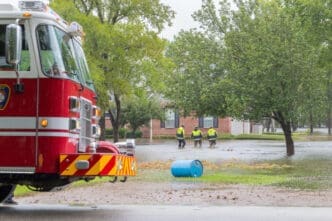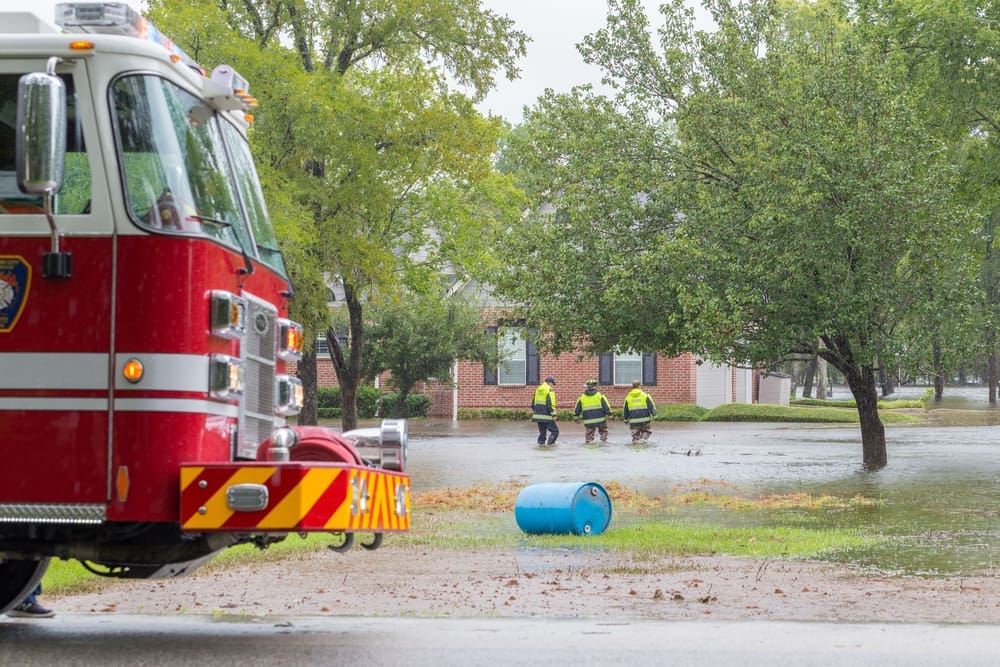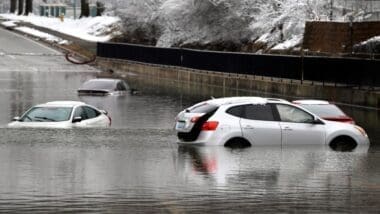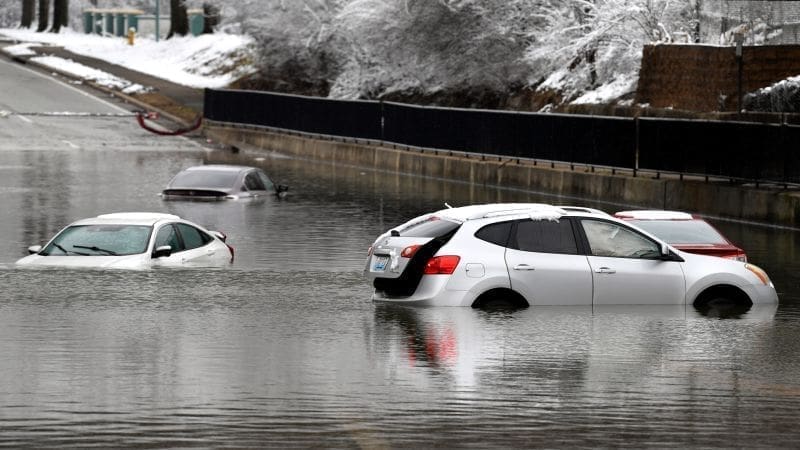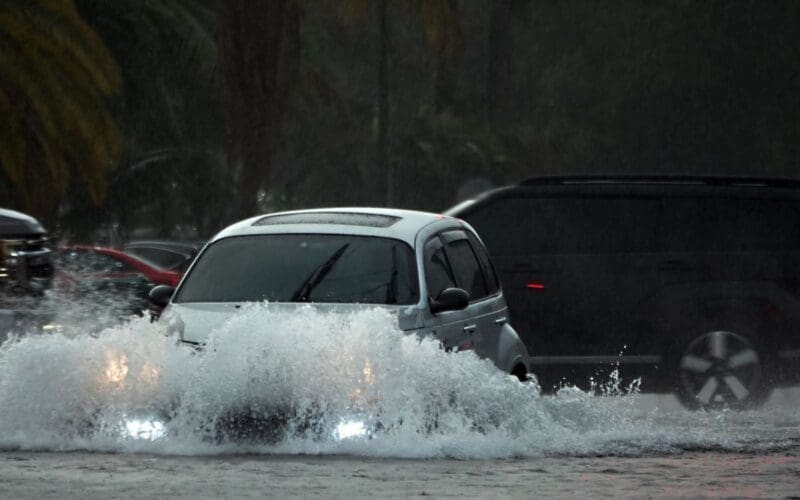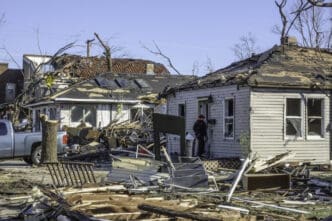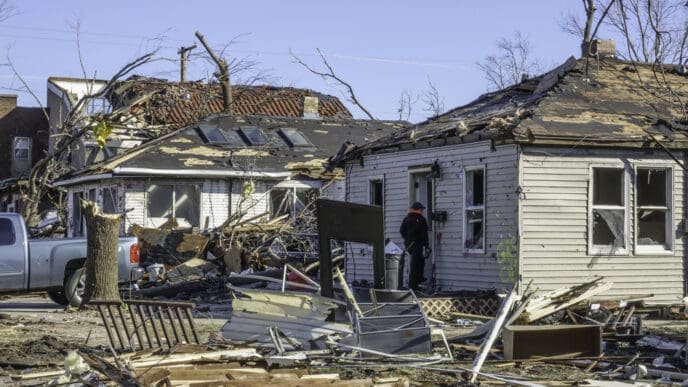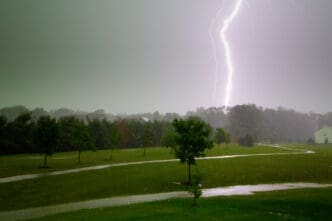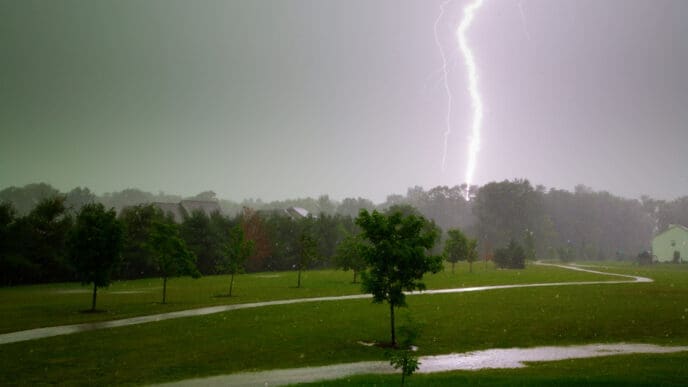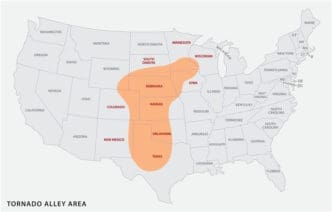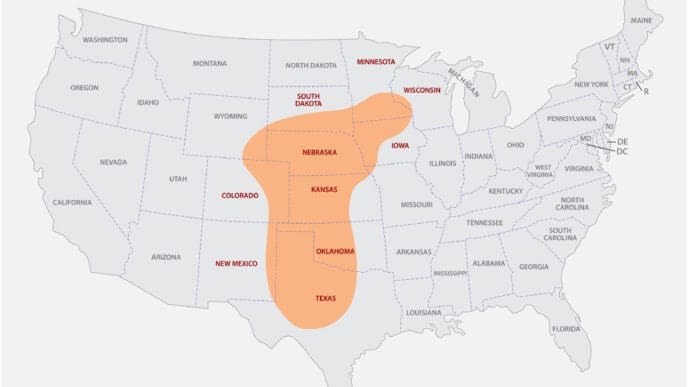Torrential rain and flash flooding are anticipated to strike parts of the South and Midwest this Saturday, regions already saturated from days of severe storms that have spawned deadly tornadoes. The central U.S. has been pummeled by relentless rain, causing rapidly rising waterways and prompting flash flood emergencies Friday night in Missouri, Texas, and Arkansas. Communities continue to grapple with the devastation left by tornadoes that obliterated neighborhoods and claimed at least seven lives earlier in the week.
In Frankfort, Kentucky, a tragedy unfolded as floodwaters swept away a 9-year-old boy, identified as Gabriel Andrews, while he was heading to a school bus stop Friday morning. His body was later discovered about half a mile from where he went missing.
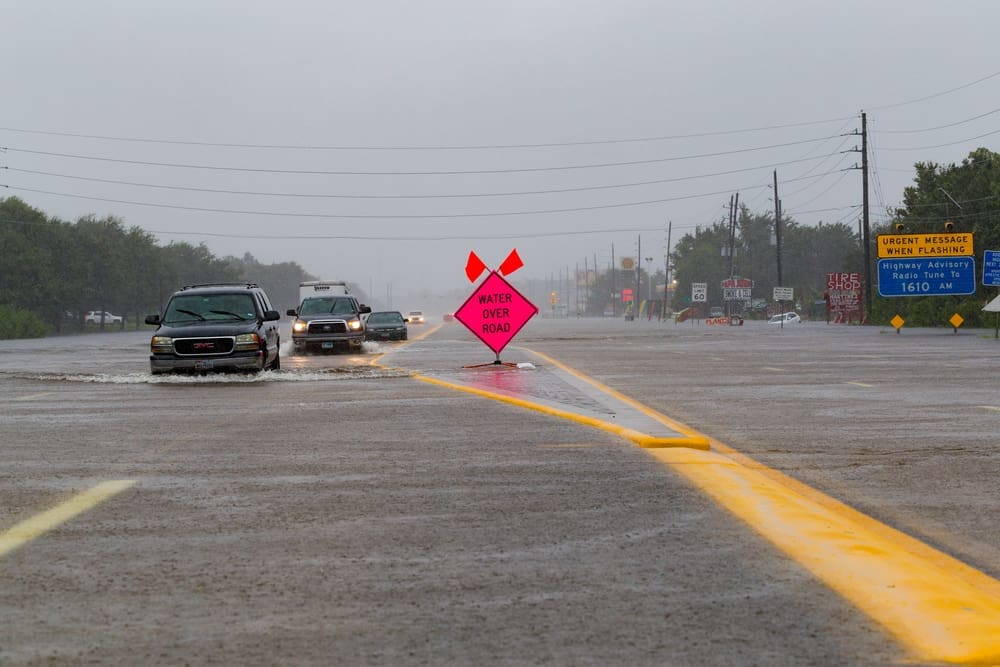
The downtown area of Hopkinsville, Kentucky, a city of 31,000 residents located 72 miles northwest of Nashville, was submerged on Friday. Emergency responders rescued a dozen people from their homes and relocated numerous pets from the rising waters. Efforts to combat the flooding were ongoing, with residents like Tony Kirves employing sandbags and vacuums to protect properties.
Flash flood threats remain pervasive across several states. The National Weather Service issued flash flood emergencies in at least seven cities in Missouri, Texas, and Arkansas, including Van Buren, Missouri, where numerous water rescues took place amid rising waters. Heavy rains are projected to continue, heightening the risk of flash floods in Missouri, Texas, Arkansas, Kentucky, and other areas.
In Christian County, Kentucky, which encompasses Hopkinsville, substantial rainfall has caused significant flooding. The rain has pushed the Little River over its banks, and additional downpours are expected. The situation has rendered hundreds of roads impassable due to floodwaters, debris, and landslides.
Extreme flooding along key transportation corridors, including Louisville, Kentucky, and Memphis, could disrupt shipping and supply chains. The situation is compounded by swollen rivers in Ohio, where road closures have been reported.
The violent weather conditions are attributed to a combination of warm temperatures, an unstable atmosphere, strong wind shear, and moisture from the Gulf. The National Weather Service has issued numerous tornado warnings since the outbreak began mid-week.
Tornadoes have left destruction in their wake, with observed reports in Missouri and Arkansas. Earlier storms resulted in fatalities and significant damage, particularly in Tennessee, Missouri, and Indiana. Precautionary measures, such as seeking shelter in courthouses, are credited with saving lives amidst the severe weather.
In Arkansas, tornadoes caused significant damage across several counties, while in Mississippi and Kentucky, numerous homes sustained damage during the storms.
Impact on Daily Life
- The economic impact on local businesses and infrastructure could have lasting effects, slowing recovery and rebuilding efforts in the hardest-hit regions.
- Residents in affected areas face immediate challenges due to flooding, including displacement, property damage, and disrupted daily routines.
- The severe weather may lead to delays in shipping and supply chains, potentially affecting the availability of goods and services.
- Public safety concerns are heightened with the continued threat of flash floods and tornadoes, necessitating vigilance and preparedness among communities.
- Emergency services and resources are likely to be stretched thin, impacting response times and support for those in need.
